Each year on the second weekend of May the bird count "Stunde der Gartenvögel" takes place Germany-wide. Unfortunately, I could not participate this year in the bird count. However, I still decided to count birds by myself on another weekend and write about my observations here on the blog. I could not submit my observations this year, of course, but I still wanted to share my observations and summarize the results of the bird count "Stunde der Gartenvögel 2024".
The bird count “Stunde der Gartenvögel 2024”
May was full this year. I went on two short journeys on two weekends. Furthermore, I was very busy at work, which was full with situations that took much energy. And I had a cold and coughed a lot.
Could I find time for the bird count "Stunde der Gartenvögel 2024"?
Yes and no.
Luckily, I still could participate in the City Nature Challenge at the end of April and the beginning of May. I also tried to contribute early morning bird concert recordings for the Dawn Chorus. I could, but unfortunately not on the exact days I should have recorded the concerts and one recording fell into June. Well, on the second weekend of May, I did not accomplish this year to participate in the bird count "Stunde der Gartenvögel 2024".
I felt sorry for that, because I think this bird count is for a good course.

Instead, I thought, I just could go into the next park a weekend later and write a small summary of the bird count 2024. I could not submit my observations, evidently, but instead I wanted to share all my bird observations I had on that weekend in the Volkspark Friedrichshain in Berlin during a one-hour walk.
Further below I will present the results of the bird count 2024.
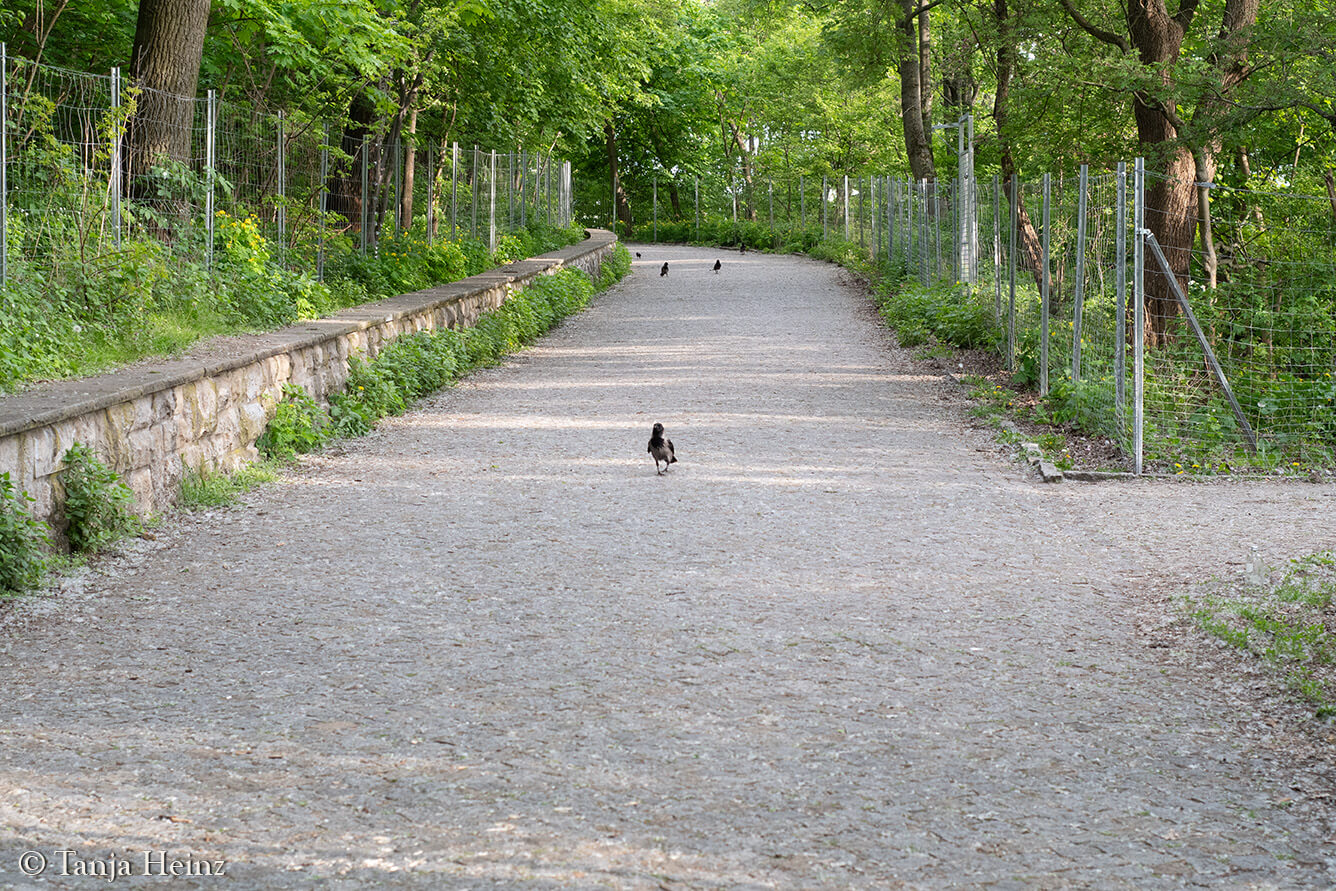
Information: Do you want to participate in the next bird count "Stunde der Gartenvögel"? The next bird count is in 2025 from the 8th to the 11th of May.
Bird observations in the Volkspark Friedrichshain
As the Volkspark Friedrichshain is close to my apartment, I often go for a walk in this park. Usually in moments when I need something green around me and when I am not in the mood to travel to another place outside of Berlin by public transport. I especially like the Volkspark Friedrichshain in the morning when I have to share the park with only a few people. At that time, birds in the park are most active.
As I really wanted to go for a walk in May, I unfortunately could not manage to go for a walk early in the morning in that park. But on one afternoon/evening.
Of course, I knew already that I would not find as many birds as I would have found early in the morning.
But still, I could spot some bird species.
The first bird I saw was a European robin.

I could not see it, but I heard it.
I continued with my walk and just a little bit later I heard typical calls of blue tits.

Or was it a great tit?
I have to admit that I sometimes confuse the songs and calls of great and blue tits. But! Just a few seconds later I saw a blue tit hopping from branch to branch in the shrubs. It was a blue tit! And I felt happy that I could correctly identify the call of a blue tit!
Anywhere at the top of the trees I heard a common chiffchaff singing. The common chiffchaff is, in contrast, very easy to identify by its calls or songs, respectively. But usually, I do not try to get a glimpse of this bird, because it is a very shy bird and difficult to spot.
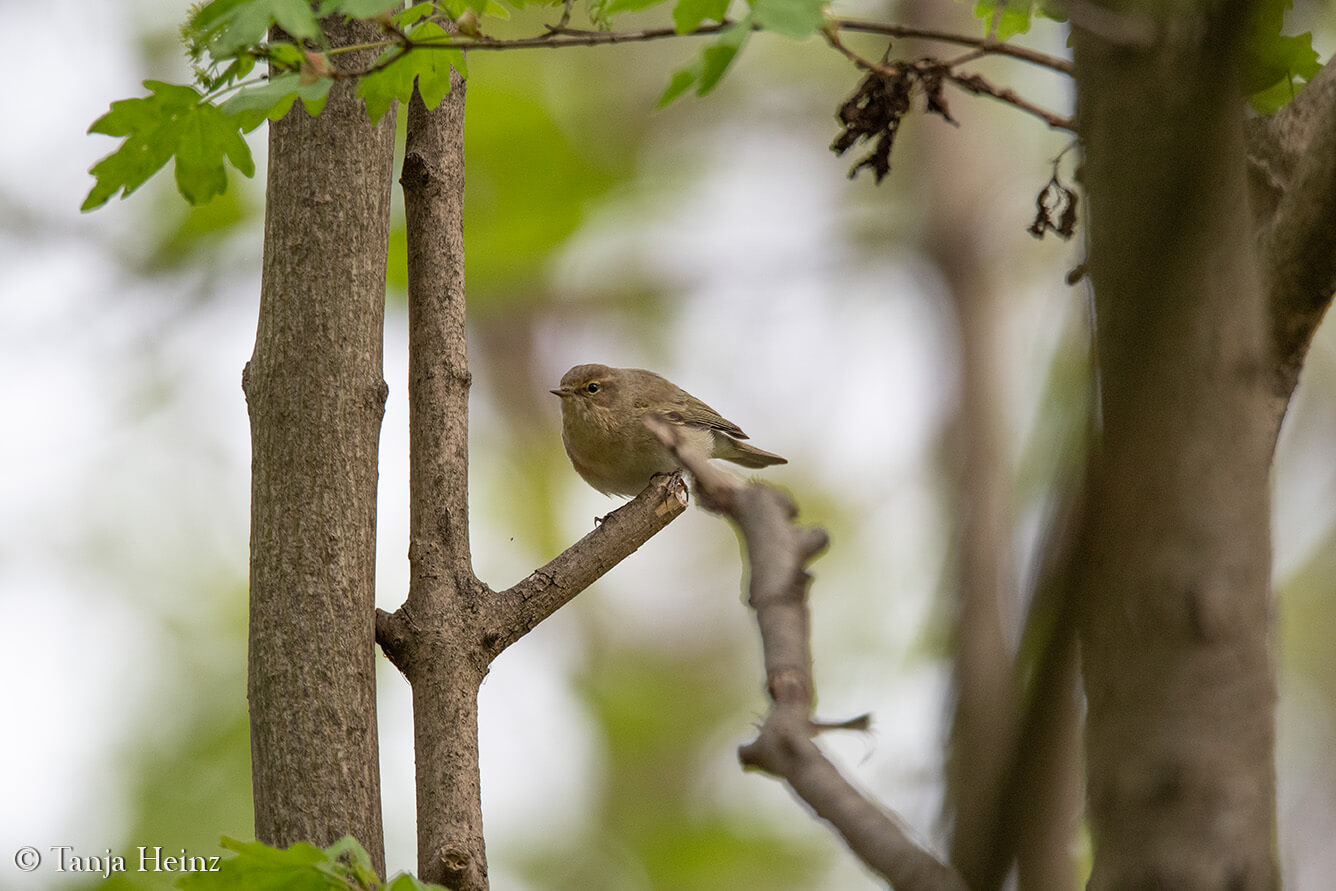
Information: I did not bring my camera with me. Thus, the photographs in this blog entry are from other walks. Some photographs here are from birds which I encountered in the Volkspark Friedrichshain. Other photographs I took at different places, but all in Berlin.
Anywhere around was a Eurasian blackbird. I could hear the bird.
But where was it?
On that day, the Eurasian blackbird knew very well how to hide. But of course. The park was very well attended on that weekend in the afternoon and evening.
I heard again a European robin. And than another one at the other side.
In one moment I heard a Eurasian blackbird and a European robin at the same time. It seemed like a competition. Which bird sang louder and more beautifully?

Honestly, I could not decide.
Blue tits around me were quite active on that day. They did not show up often, but sometimes, I saw them hopping around from branch to branch, from bush to bush. But how many of them were there? That was indeed not very easy to count.
Great tits were like the blue tits.

Sometimes they showed up suddenly. Then they vanished again very fast and immediately. At the bird feeder I could count at least four great tits.
I also spotted some hooded crows. There were three hooded crows just next to the bird feeder while another hooded crow called further afar. How many were there?
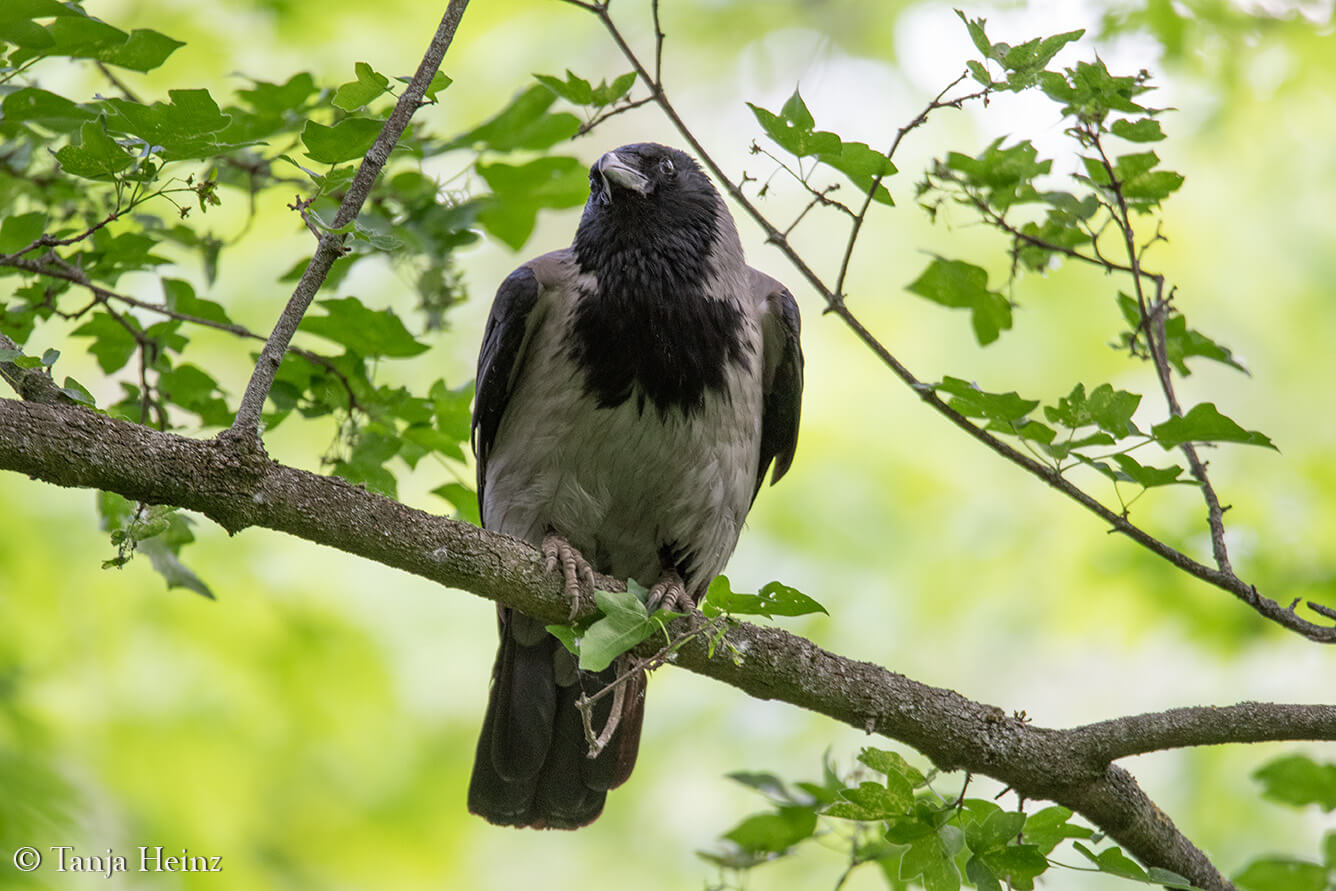
I did not stay at the bird feeder for a very long time.
If I would have counted birds for the bird count "Stunde der Gartenvögel 2024", I would have needed not to have walked around from place to place, but I would have needed to stay one hour at one place like, for example, at the bird feeder.
As I already knew that I would not be able to submit my observations anyway, I decided to go for a walk through the park and count birds.
I also wanted to go to the pond. However, before reaching the pond I heard a common nightingale sing. Unfortunately, just for a few seconds. Luckily, I got a short recording.
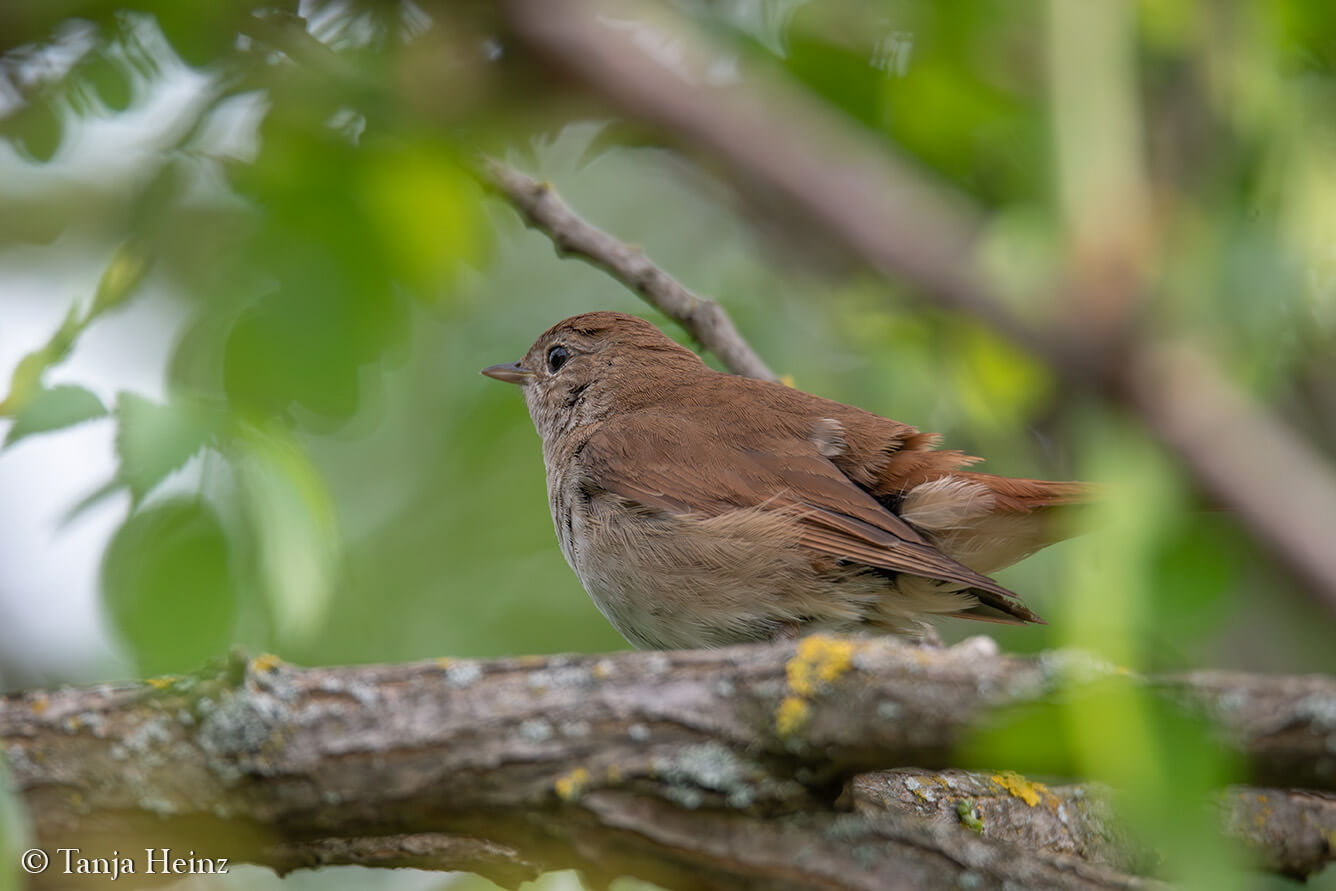
In that moment I saw a woodpigeon moving from branch to branch.

I waited for the common nightingale to sing again. But no, the common nightingale kept quiet.
Then I heard some takks in the bushes.
There should be a Eurasian blackcap, I thought.
And yes. There was one. Or were there two?

I listened to the Eurasian blackcap.
When I was about to continue, I heard the Eurasian blackbird and the European robin again singing like in a competition.
Although it felt a little bit like observing just a few birds, I actually could hear quite many of them. And that on such a well-attended afternoon/evening.
At the end of my walk, I finally reached the pond.
At the pond I saw a grey heron (photograph on the left) and Eurasian coots (photograph on the right). While one of the Eurasian coot was sitting in its nest, the other one was swimming around.
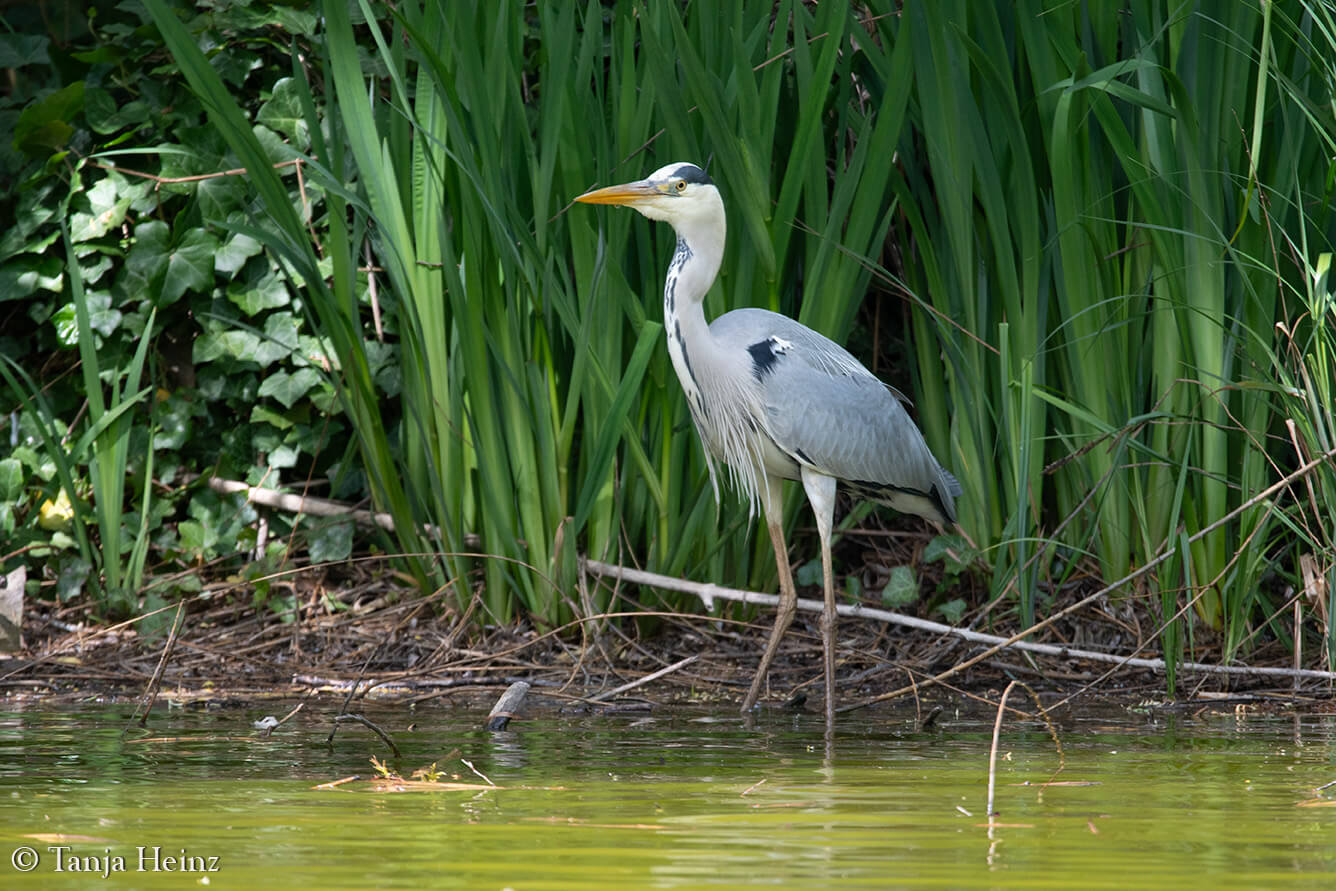
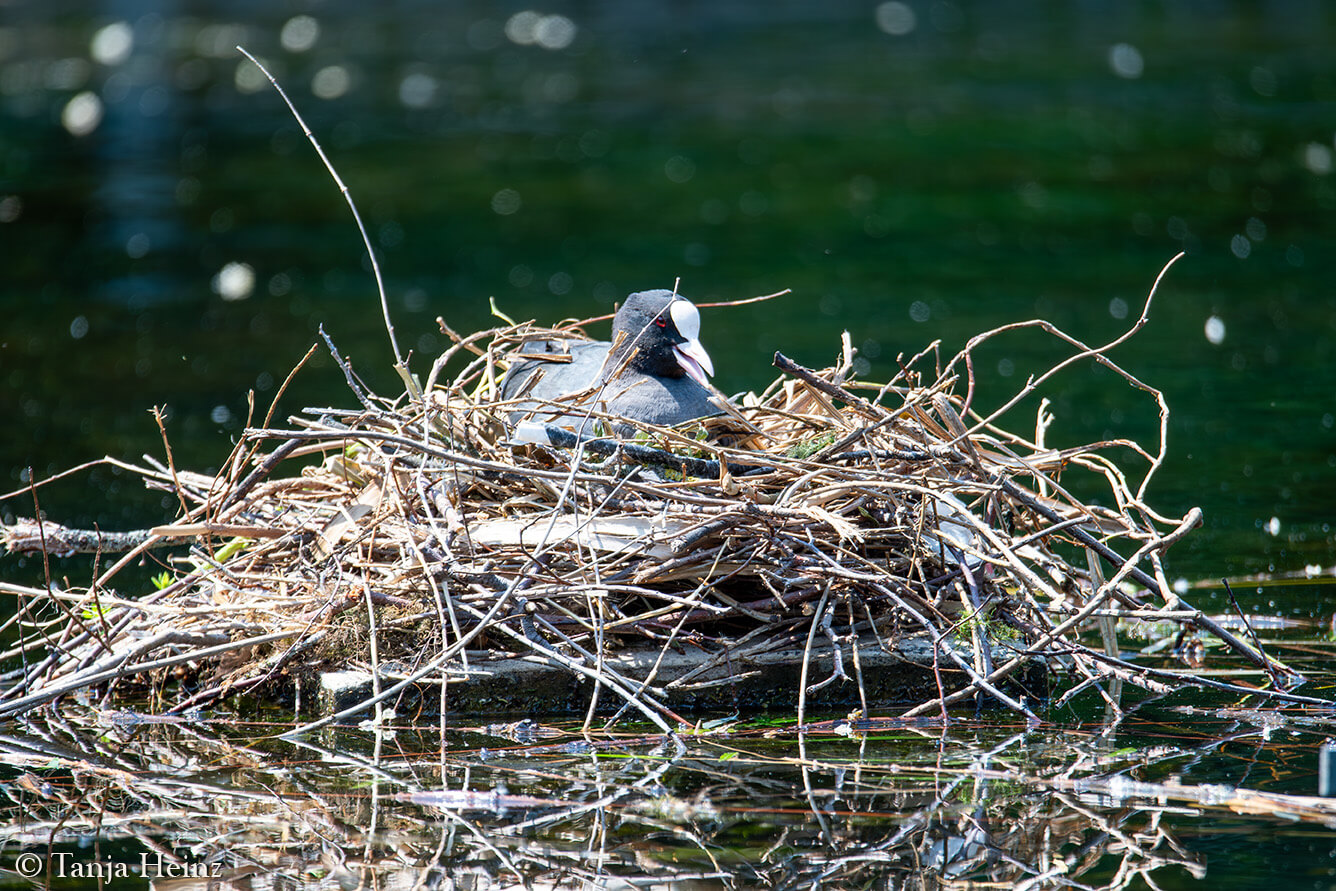
A common moorhen (photograph on the left) and two mallards (photograph on the right) were also around.
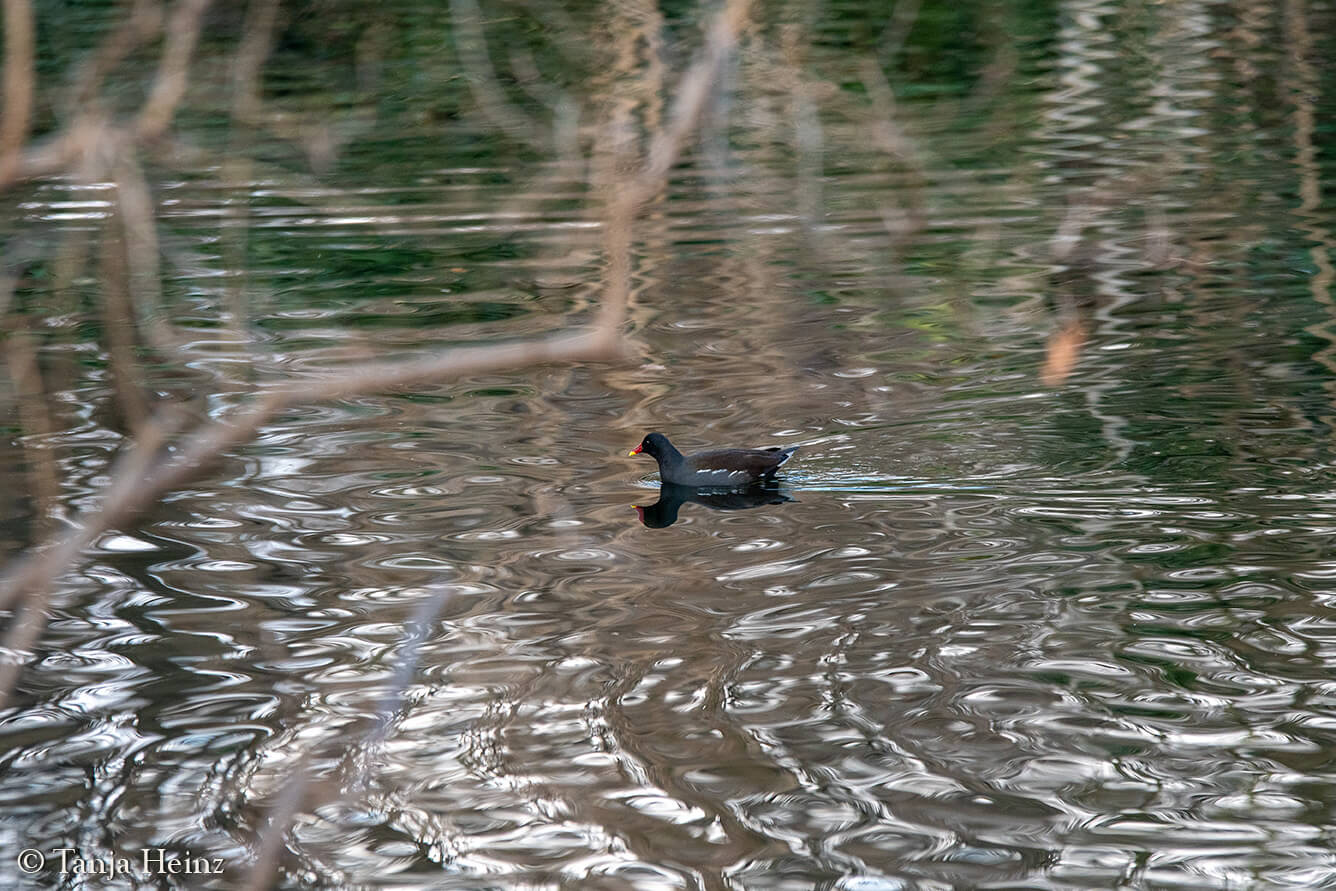

The pond was - in my opinion - quite empty. But I know that many visitors feed the birds in the pond with bread despite all the signs around the pond telling visitors not to feed the birds with bread. Unfortunately, many visitors do not read the signs or they ignore them. For sure, it is not easy for rangers in Berlin to protect such a well-attended pond from dying.
Was it because of that why I could not see that many water birds in the pond swimming around?
The pond was full with green algae and, by all means, did not look very healthy...
Around the pond in the bushes I could hear some house sparrows. But they did not show up, neither. Like many birds on that day.
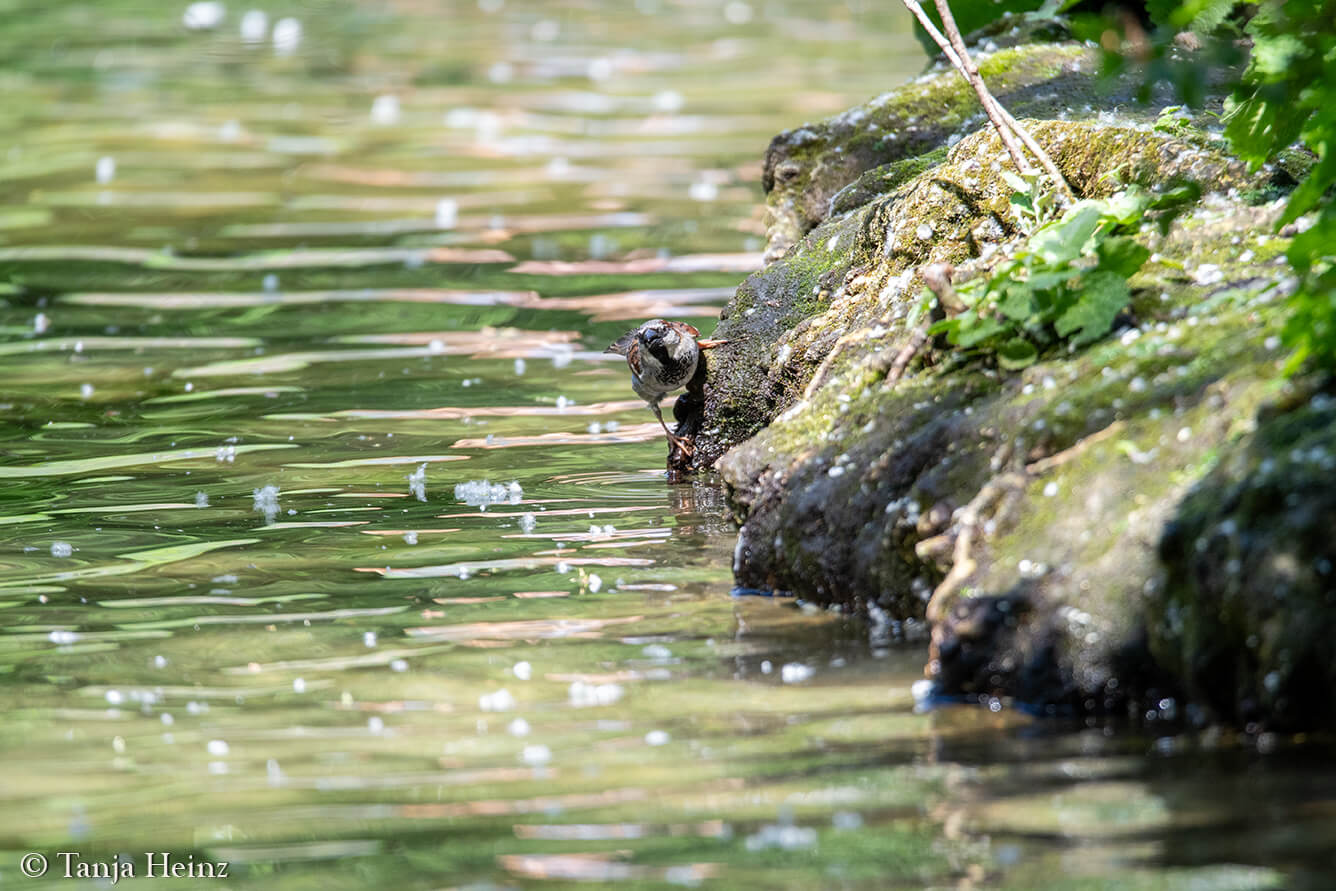
Question: Have you participated in the bird count 2024 "Stunde der Gartenvögel"? If yes, which birds have you seen? Where have you participated? Please let me know in the comments.
Results of the bird count 2024
In 2024, participants of the bird count came to 1.212.438 birds in 40.536 gardens and parks. In total, 58.928 people participated in the bird count 2024 "Stunde der Gartenvögel".
The most common bird in Germany was again the house sparrow, followed by the Eurasian blackbird and the great tit.
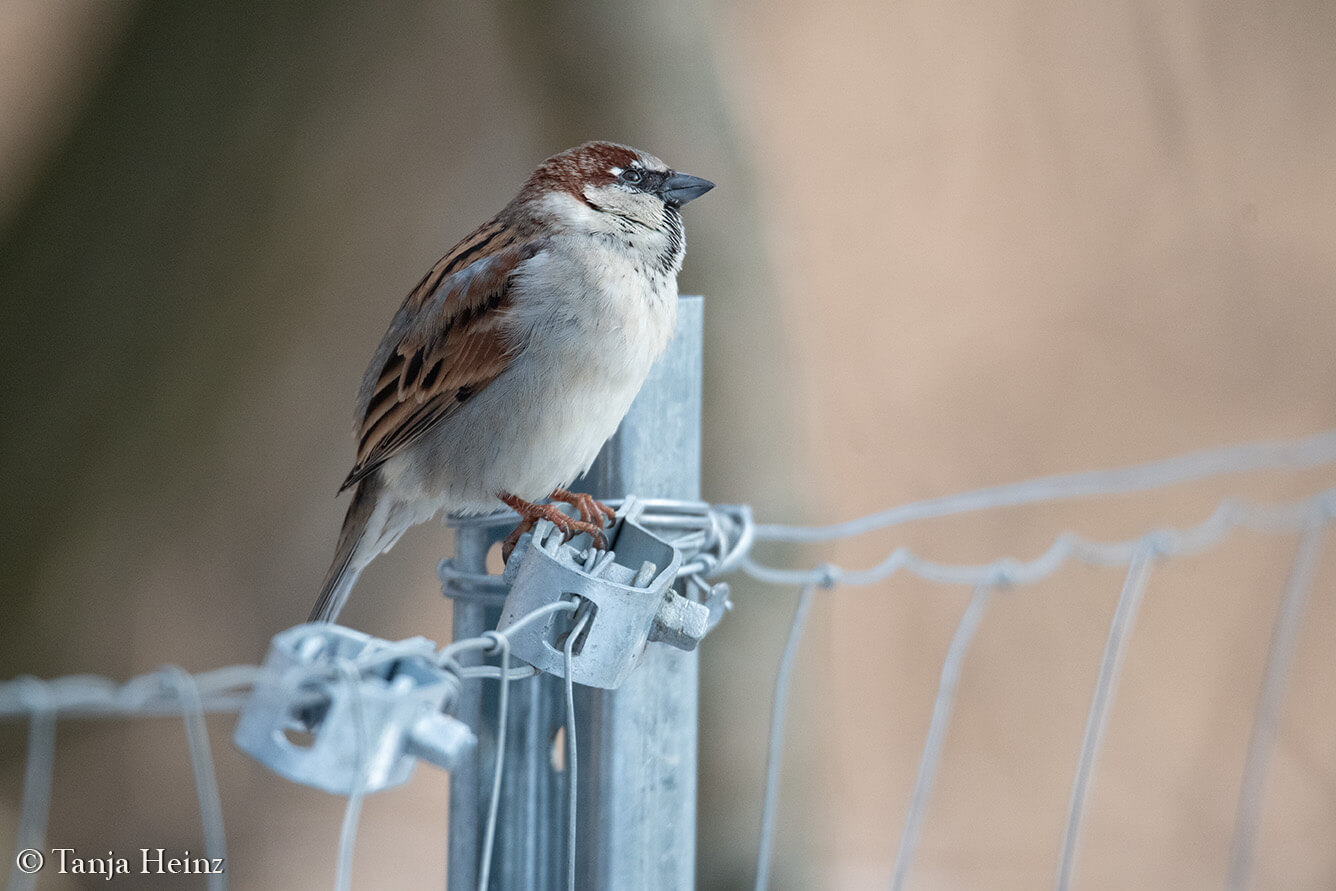


These results came about Germany-wide.
In Berlin, the house sparrow reached the first place as well. However, on the second and third place were the starling and the woodpigeon.
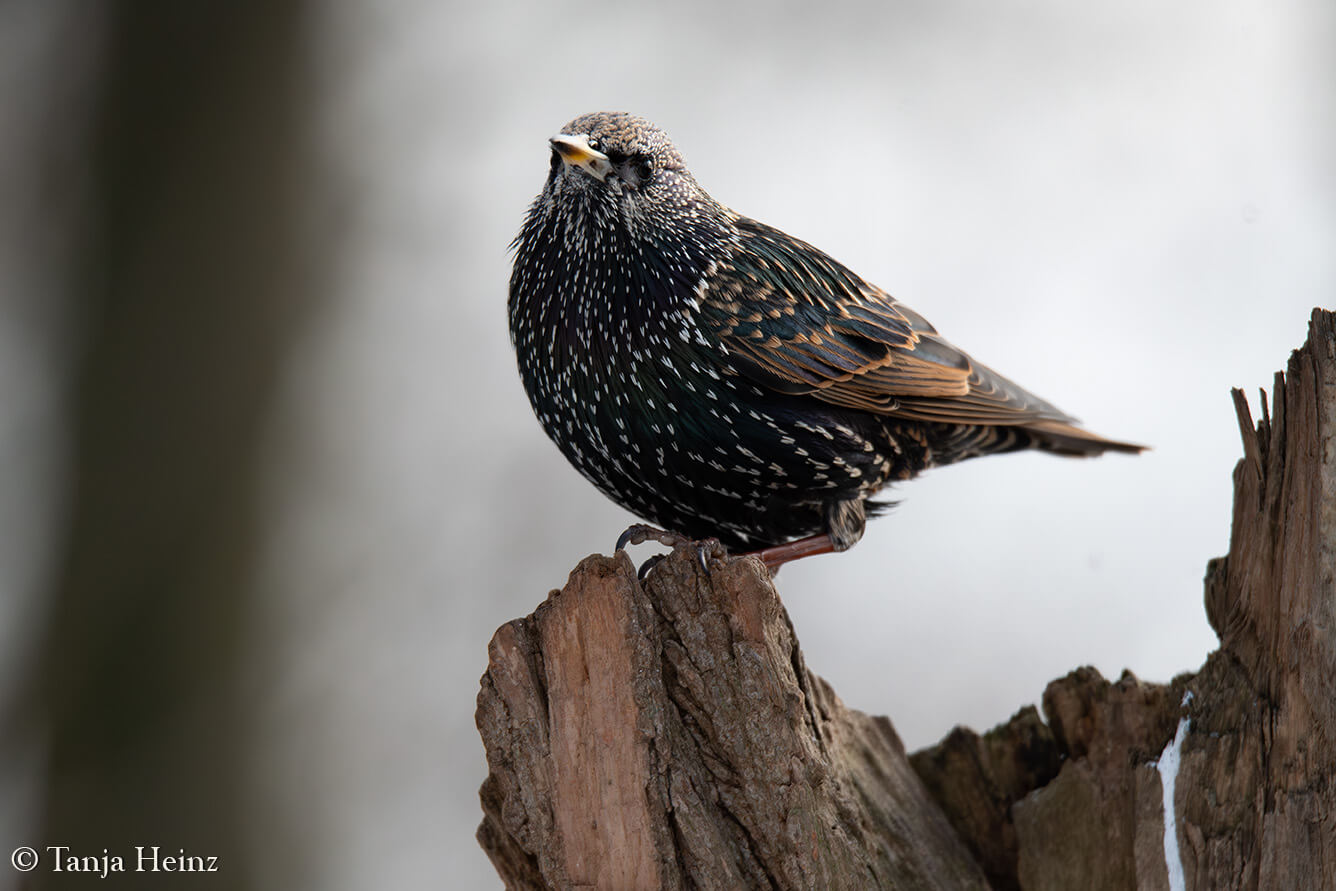
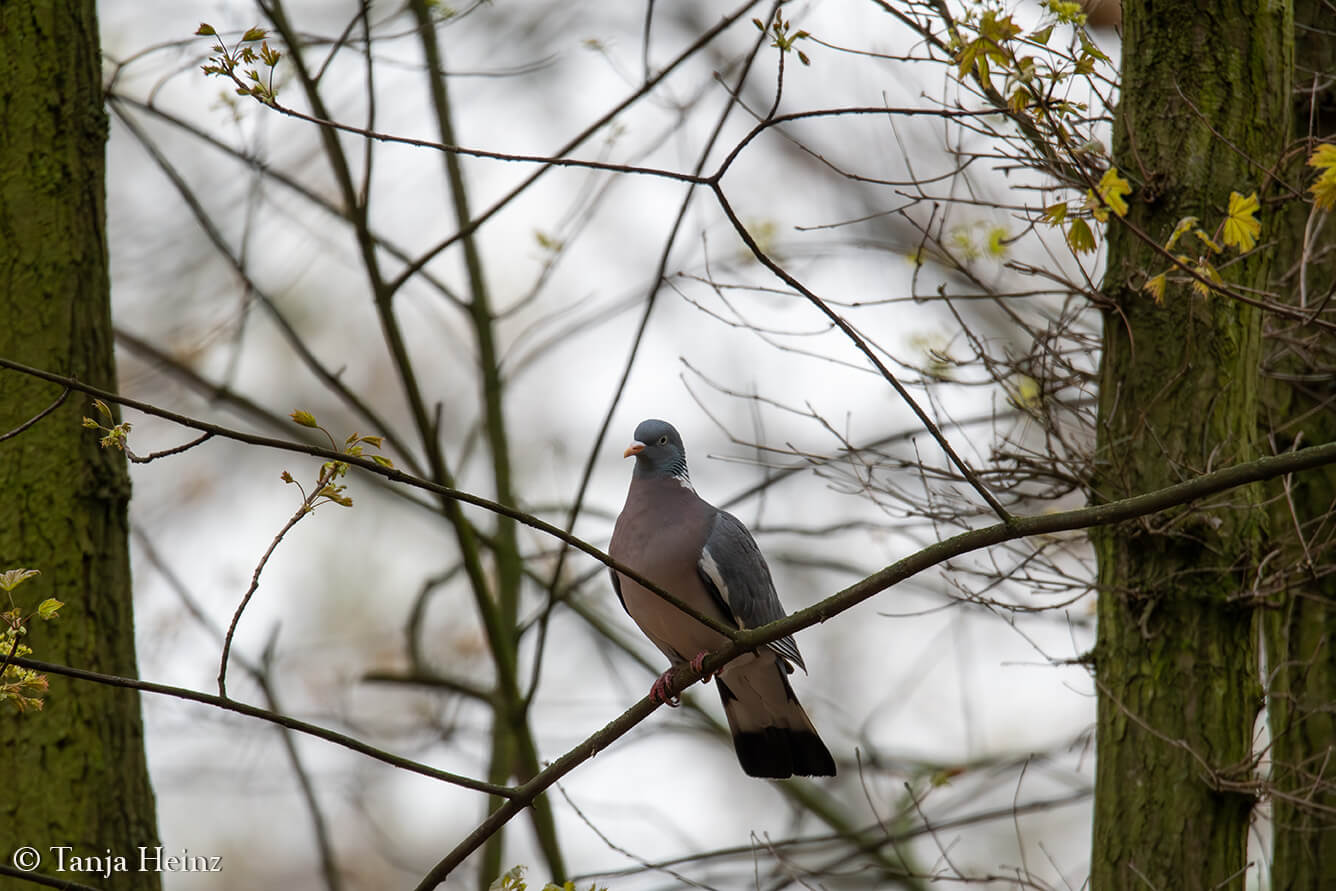
According to the NABU, especially good results were achieved for the common chiffchaff and the Eurasian wren (on the photograph).

Probably, it was because of the relatively warm winter, why these birds increased in number.
Unfortunately, there were also birds which decreased.
On the one side, there was the barn swallow (photograph on the left), and on the other side, there was the common house martin (photograph on the right).
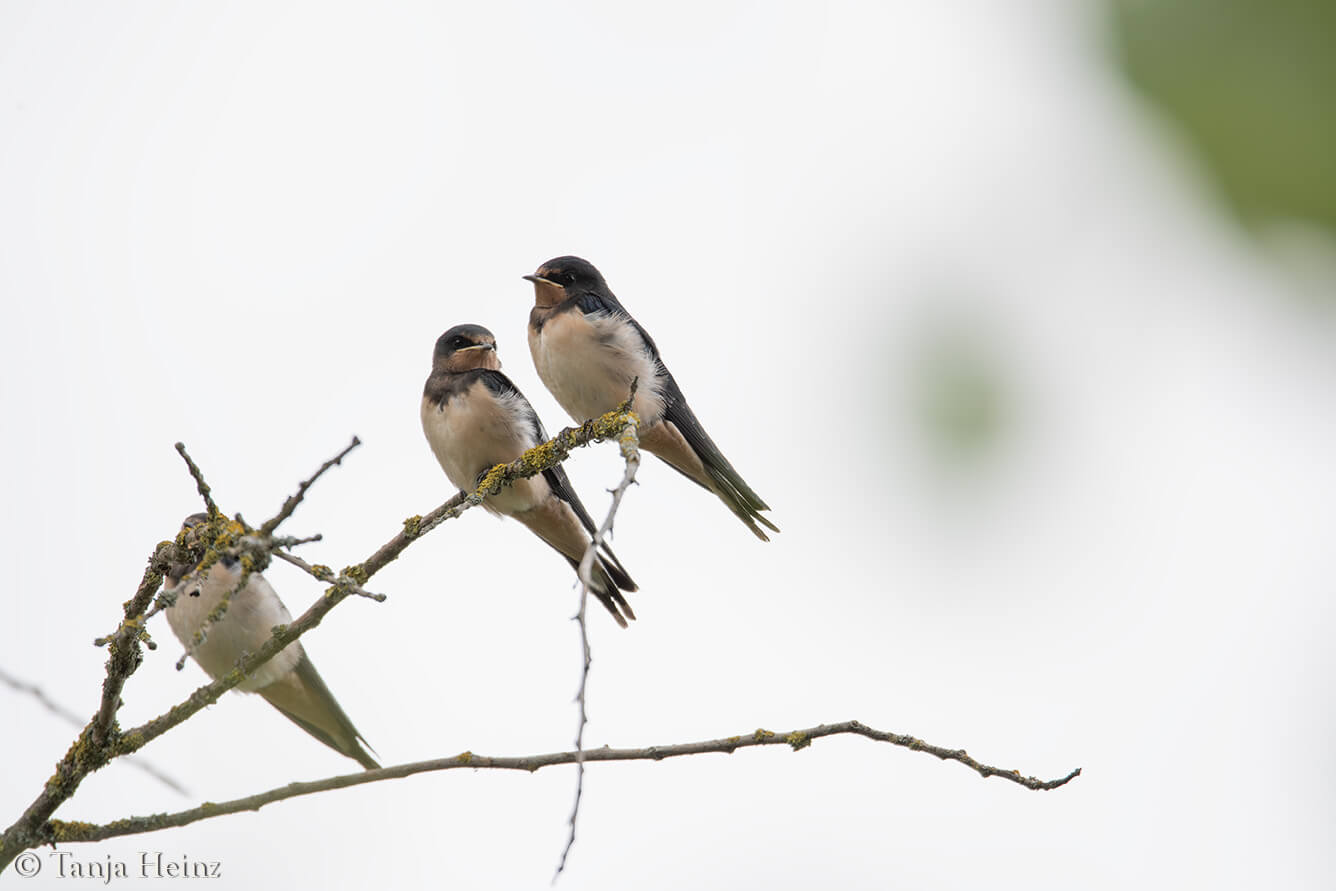
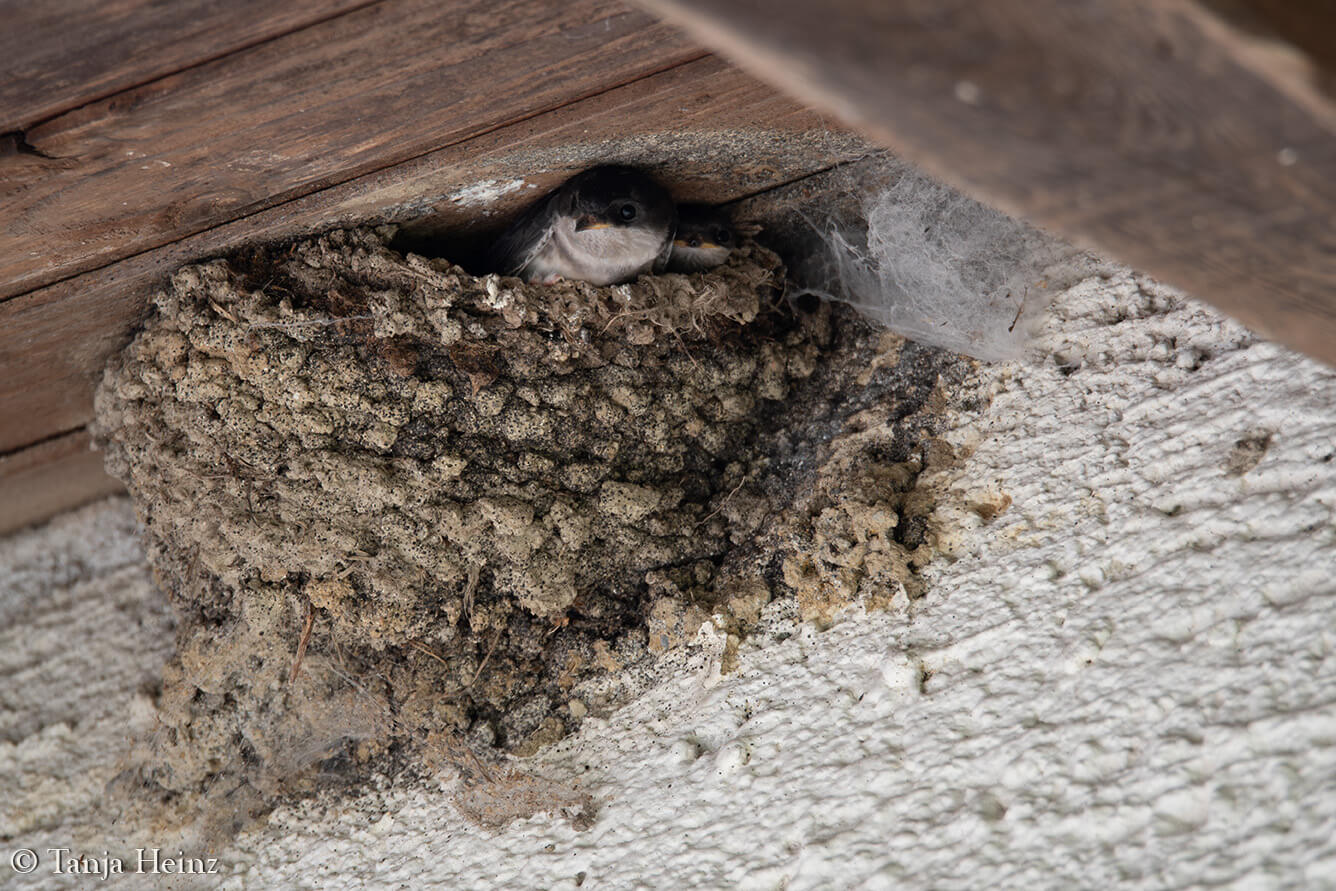
Was it because of the winter weather in April when they arrived in Germany? Or was there another reason?
How will numbers develop in the future?
Information: The NABU created infographics to visualize trends of most common birds in Germany. While birds like tree sparrows, woodpigeons, and great spotted woodpeckers increased in numbers, other birds like common house martins, commons swifts, or common chaffinches decreased over several years.
More information
Have you participated in the bird count 2024 "Stunde der Gartenvögel"? Or do you know another bird count? Which birds do you often see around your home? Please let me know in the comments.


